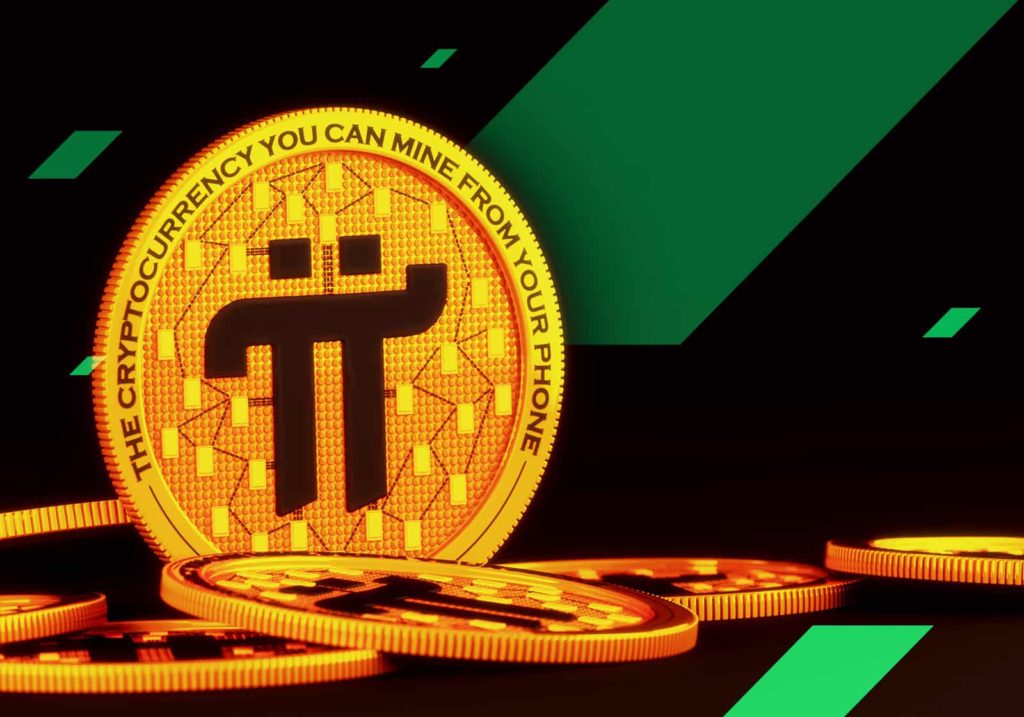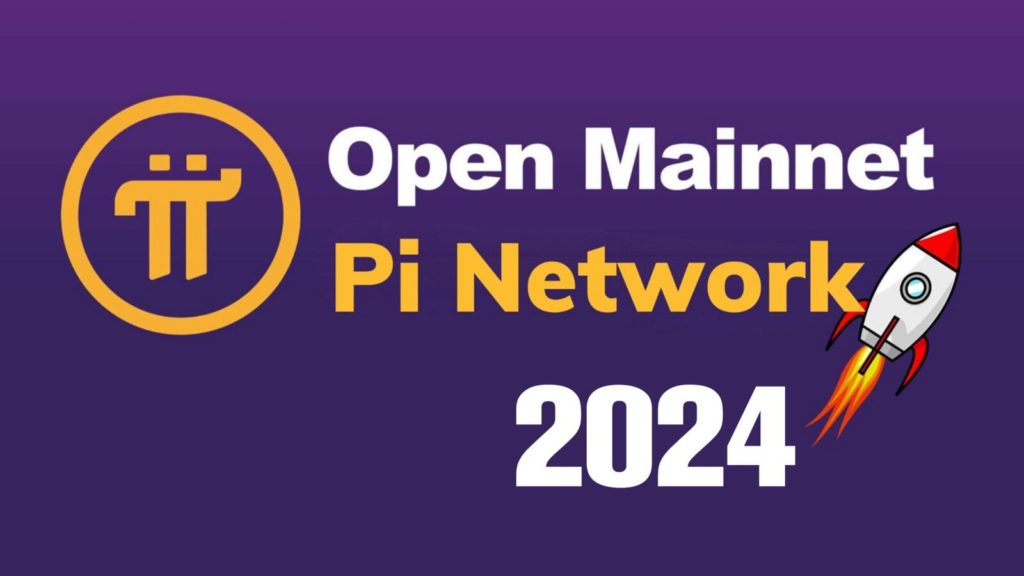
What is Pi Network?
Pi Network is a decentralized cryptocurrency platform that allows users to mine Pi coins directly from their mobile devices. Launched in 2019, it aims to make cryptocurrency accessible to the masses through an innovative consensus algorithm that ensures energy efficiency.
Introduction
Pi Network is a novel cryptocurrency project designed to bring digital currency mining to everyday users. Unlike traditional cryptocurrencies like Bitcoin, Pi Network operates on a user-friendly mobile app, allowing users to mine Pi coins without needing specialized hardware or high energy consumption.
Pi Network is an online blockchain ecosystem that is open to everyone worldwide. It uses “Pi,” a new cryptocurrency created for and by regular people. You can easily and for free “mine Pi” on your phone. With Pi, you can access and use the power of cryptocurrencies right from your fingertips. Previously, most cryptocurrencies, such as Bitcoin, have been extremely difficult for regular people to use.
Pi Network was developed by a team of Stanford PhDs and launched in 2019. The project’s primary goal is to democratize access to cryptocurrencies, making it easier for anyone with a smartphone to participate in the global digital currency market.

The Origin of Pi Network
The concept behind Pi Network was initiated by Dr. Nicolas Kokkalis and a team of scientists from Stanford University. They recognized that while cryptocurrencies had the potential to reshape global finance, the high cost and technical complexity of mining made them inaccessible to the average person.
As a pioneering force in the realm of digital currency, picoin stands at the forefront of innovation, poised to redefine the landscape of decentralized finance. Spearheaded by a team of visionary minds, Pi coin isn’t just another cryptocurrency; it’s a paradigm shift in how we perceive and interact with digital assets.
At its core, picoin is a decentralized blockchain project that endeavors to create a more accessible and inclusive ecosystem for cryptocurrency enthusiasts worldwide. Unlike traditional cryptocurrencies that demand substantial computational resources for mining, it introduces a revolutionary approach that leverages the power of everyday mobile devices.
How Pi Network Differs From Other Cryptocurrencies?
Unlike traditional cryptocurrencies that use the energy-intensive Proof of Work (PoW) mechanism, Pi Network utilizes a more sustainable consensus algorithm called Stellar Consensus Protocol (SCP). This makes Pi mining possible through mobile phones, without draining battery life or requiring significant computational power.
Here’s a comparison table highlighting how Pi Network differs from other cryptocurrencies:
| Feature | Pi Network | Other Cryptocurrencies |
|---|---|---|
| Consensus Mechanism | Stellar Consensus Protocol | Proof of Work, Proof of Stake, etc. |
| Mining Method | Mobile mining via app | Hardware mining or staking |
| Accessibility | Designed for everyday users | Often requires technical knowledge |
| Token Availability | Currently in development | Available for trading on exchanges |
| Market Position | Still in test phase | Established with market capitalization |
| Utility | Focused on user engagement and growth | Varies widely, often transaction-based |
| Community Focus | Strong emphasis on user community | Varies, often less community-oriented |
| Transaction Speed | Expected to be fast post-launch | Varies, but many established coins are fast |
| Regulation | Ambiguous, yet compliant-focused | Subject to varied regulations globally |
| Development Team | Relatively new, less transparent | Established teams with known histories |
The Vision Behind Pi Network
Pi Network aims to create an inclusive digital economy where people can participate in cryptocurrency mining without high barriers to entry. The developers envision a decentralized marketplace where Pi coins can be used for goods and services, and its widespread use in everyday transactions.
The vision behind Pi Network is to create a user-friendly cryptocurrency that is accessible to everyone, regardless of technical knowledge. Here are the key aspects of its vision:
- Accessibility: Pi Network aims to enable anyone with a smartphone to participate in the cryptocurrency ecosystem, making it easier for users to mine and manage their coins.
- User Empowerment: The project emphasizes the importance of community and user engagement, allowing users to be part of the development and decision-making process.
- Decentralization: Pi Network seeks to build a decentralized economy, promoting peer-to-peer transactions and reducing reliance on traditional financial systems.
- Educational Focus: The platform aims to educate users about blockchain technology and cryptocurrencies, helping to demystify the space and encourage adoption.
- Scalability: By using a mobile-first approach and a unique consensus mechanism, Pi Network aims to ensure that the network can grow and handle a large number of users without compromising performance.
- Practical Utility: The ultimate goal is to develop a platform where Pi coins can be used for real-world transactions, fostering a functional ecosystem.
Overall, Pi Network envisions creating a cryptocurrency that bridges the gap between traditional finance and the digital economy, making it accessible to a broader audience.

How Does Pi Network Work?
Pi Network operates through a mobile app that allows users to mine Pi coins by contributing to the network’s security. Here’s how the process works:
1. Downloading the Pi Network App
The first step in participating in the Pi Network is to download the official Pi Network app, available on iOS and Android devices. The app acts as a mining interface and digital wallet for Pi coins.
2. Earning Pi Coins Through Mining
Mining on Pi Network is different from traditional mining. Users earn Pi coins by logging into the app daily and pressing a button to confirm their participation. The process does not require heavy computational work, which makes it energy-efficient.
3. Security Circles and Validation
A unique feature of Pi Network is its security circle mechanism. Users must build trust-based circles with other users to help secure the network. This decentralized system ensures the integrity of transactions without relying on energy-intensive mining farms.
4. Role of Validators
Pi Network uses a network of trusted validators to confirm transactions and ensure the legitimacy of the Pi mined by users. Validators are typically early adopters of the network or those who have built a reputation for reliable activity.

Is Pi Network a Scam or Legitimate?
Many users wonder if Pi Network is legitimate or if it’s a scam. Here’s what you need to know:
1. No Financial Investment Required
One major reason Pi Network is not considered a scam is that users don’t need to invest any money to mine Pi coins. Participation is free, and all that’s required is a smartphone and an internet connection.
2. Future Utility of Pi Coins
The value of Pi coins has yet to be determined as the project is currently in its testnet phase. Pi Network has not been listed on any major cryptocurrency exchanges, but the team plans to launch on the mainnet and open market trading in the near future.
3. Transparent Development Team
The founders and development team of Pi Network are publicly known and have reputable backgrounds. Their transparency adds credibility to the project, and the ongoing development efforts show that Pi Network has a clear roadmap for the future.

Decentralized Finance (DeFi)
Decentralized Finance, often abbreviated as DeFi, refers to a revolutionary movement aimed at leveraging blockchain technology to recreate traditional financial systems in a decentralized manner. In contrast to centralized financial institutions like banks or exchanges, which exert control over users’ funds and transactions, DeFi platforms operate on decentralized networks, enabling peer-to-peer transactions and removing the need for intermediaries.
Overall, decentralized finance represents a paradigm shift in the way financial services are accessed, executed, and managed. By leveraging blockchain technology, DeFi aims to increase financial inclusion, reduce reliance on centralized authorities, and create more efficient, transparent, and accessible financial systems for people worldwide.
Key elements of decentralized finance include:
Decentralized Applications (DApps):
These are applications built on blockchain networks that offer financial services such as lending, borrowing, trading, and asset management. DApps operate without central control, relying on smart contracts to automate transactions and ensure trust between parties.
Smart Contracts:
These self-executing contracts are coded to automatically execute predefined terms when certain conditions are met. In DeFi, smart contracts facilitate various financial activities, such as lending and trading, without the need for intermediaries.
Decentralized Exchanges (DEXs):
DEXs allow users to trade cryptocurrencies directly with one another without relying on a centralized intermediary to facilitate transactions. This eliminates counterparty risk and provides greater privacy and security for traders.
Lending and Borrowing Platforms:
DeFi platforms enable users to lend their cryptocurrencies and earn interest or borrow assets by collateralizing their holdings. These platforms utilize smart contracts to automate lending and borrowing processes, offering competitive interest rates compared to traditional financial institutions.
Asset Management and Yield Farming:
DeFi protocols offer tools for managing and investing in digital assets, including yield farming, which involves providing liquidity to decentralized exchanges or protocols in exchange for rewards in the form of additional tokens.
Stablecoins:
Stablecoins are cryptocurrencies pegged to the value of fiat currencies like the US dollar, euro, or yen. They provide stability and are commonly used as a medium of exchange and store of value within DeFi ecosystems.
Pi Network Community and Support
In the ever-evolving landscape of decentralized finance, community engagement and robust support systems serve as the bedrock upon which transformative projects like Pi coin thrive. As a seasoned expert in the realm of cryptocurrency, I am honored to illuminate the significance of community and support within the Pi Network ecosystem, underscoring their pivotal role in driving innovation, fostering collaboration, and empowering individuals worldwide.
In fact, community and support serve as the cornerstone of Pi coin’s success, embodying the principles of collaboration, inclusivity, and empowerment that define the ethos of decentralized finance. As we continue to embark on this transformative journey together, let us uphold these values and forge a future where financial sovereignty is accessible to all, guided by the unwavering solidarity and resilience of the community.
Vibrant Community Dynamics:
At the heart of Pi coin lies a dynamic and diverse community of users, united by a shared vision of financial empowerment and technological innovation.
Through forums, social media groups, and official channels, community members come together to exchange insights, share experiences, and foster meaningful connections.
The vibrant community ethos of Pi Blockchain transcends geographical boundaries and cultural differences, creating a global network of like-minded individuals dedicated to advancing the principles of decentralization and inclusivity.
Peer-to-Peer Support Networks:
Within the community, peer-to-peer support networks play a pivotal role in empowering users to navigate the complexities of the ecosystem with confidence and clarity.
Experienced users serve as mentors and guides, offering valuable advice, troubleshooting assistance, and practical tips to newcomers seeking to enhance their understanding and participation in the network.
By fostering a culture of knowledge-sharing and mutual assistance, Pi Net cultivates an environment where every member has the opportunity to learn, grow, and contribute to the collective success of the community.
Official Support Channels:
Complementing the grassroots efforts of the community are the official support channels provided by the team, ensuring that users have access to timely assistance and guidance whenever needed.
Through dedicated customer support channels, knowledge bases, and help centers, it offers comprehensive resources to address common queries, troubleshoot technical issues, and provide updates on platform developments.
By prioritizing transparency, responsiveness, and user satisfaction, Pi Blockchain demonstrates its unwavering commitment to delivering a seamless and rewarding experience for all members of the community.
Empowerment Through Engagement:
Beyond providing technical assistance, community and support initiatives within Pi Network empower users to actively participate in the network’s growth and evolution.
By engaging in network activities, contributing to discussions, and sharing feedback with the team, users play a vital role in shaping the future direction of the platform and driving meaningful change within the ecosystem.
Through collective action and collaboration, the community harnesses the power of decentralized governance to foster innovation, resolve challenges, and realize the full potential of the network.
The Future of Pi Network
Pi Network’s roadmap is still in development, but the future looks promising. The project is currently in its third phase, which focuses on decentralization and establishing the mainnet. This phase is crucial because it will determine whether Pi coins can be traded or used in real-world transactions.
1. Mainnet Launch
Pi Network’s mainnet launch is expected to take place soon. Once this happens, users will be able to withdraw and exchange Pi coins on external platforms. This step is essential for the coin’s value and utility in the cryptocurrency space.
2. Expanding the Ecosystem
The development team is also working on expanding the ecosystem of Pi Network by integrating apps and services that accept Pi coins. This could include online stores, payment gateways, and other platforms that enable users to spend their Pi.
3. Community Growth
Pi Network has a strong and active community, which is crucial for its long-term success. The community continues to grow as more users join and participate in the platform, adding to its decentralized nature.
Conclusion
Pi Network offers a unique approach to cryptocurrency mining, making it accessible to anyone with a smartphone. With its energy-efficient algorithm and the absence of costly investments, it has attracted millions of users worldwide. However, while Pi Network shows promise, it’s essential to remember that the project is still in its developmental phase, and the value of Pi coins remains speculative until the mainnet launch.
Key Takeaways:
- Pi Network is a decentralized cryptocurrency project focused on making mining accessible to everyday users via mobile phones.
- Mining on Pi Network is energy-efficient and does not require expensive hardware.
- Pi coins have no market value yet, as the project is still in its testnet phase.
- The mainnet launch will be a critical turning point for Pi Network’s future and the value of Pi coins.
- The platform’s goal is to democratize cryptocurrency and build a decentralized marketplace for Pi coins.

